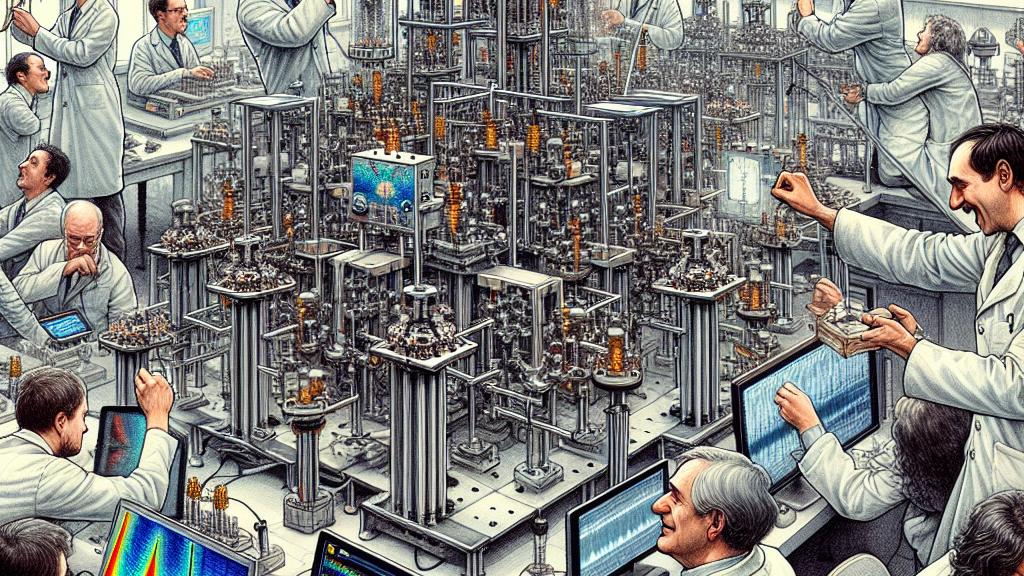Advancements in Universal Control of Quantum Dot Systems
Overview
- Groundbreaking research at TU Delft highlights universal control over a system of four singlet-triplet qubits.
- This innovative breakthrough promises to dramatically enhance the scalability and functionality of quantum computing.
- These findings represent a significant leap forward in the realm of quantum information processing, with the potential to transform technology in unprecedented ways.

The Breakthrough at TU Delft
Picture this: at Delft University of Technology in the Netherlands, an extraordinary breakthrough is taking place. Researchers, led by Lieven Vandersypen, have successfully achieved universal control over a system comprising four singlet-triplet qubits, making history where others have struggled. Entering the realm of quantum mechanics can feel like navigating an intricate labyrinth, but this team has steered through complexities by constructing a sophisticated 2x4 array of germanium quantum dots. Through ingenious time-domain measurements, they fine-tuned the interactions between these neighboring spins. This accomplishment not only represents a triumph in nanotechnology but symbolizes the relentless pursuit of knowledge and mastery over the quantum world.
Implications for Quantum Computing
The implications of this groundbreaking research ripple far beyond the confines of academic journals. Imagine living in a world where quantum computers can process complex calculations that are currently beyond the reach of classical computers. Thanks to these developments, such a future feels increasingly attainable. By achieving sophisticated control over complex qubit systems, researchers might soon simulate intricate quantum phenomena like magnetism, which could lead to avant-garde innovations across various domains—from cryptography, which secures our way of life, to materials science, where new breakthroughs are waiting to be unearthed. Such advancements could fundamentally alter industries, improve healthcare, and enhance our digital experiences, weaving quantum technology seamlessly into the fabric of daily life.
Future Directions and Challenges
As we stand on the brink of this exhilarating era, it’s clear that the journey is just beginning. The remarkable work at TU Delft underscores the critical need to further refine two-qubit operations to ensure fidelity levels soar above the already impressive 99% seen in single-qubit controls. This ambitious pursuit is paralleled by researchers worldwide who are diving into hybrid systems—ingenious combinations of superconductors and semiconductors that hold the key to overcoming existing challenges in quantum technologies. Envision large-scale quantum processors that could transform our understanding of computation and information technology; this is the goal that drives continuous innovation and collaboration in the field. With each stride forward, we draw closer to integrating quantum mechanics into everyday life, unlocking a treasure trove of possibilities and reshaping our future.

Loading...